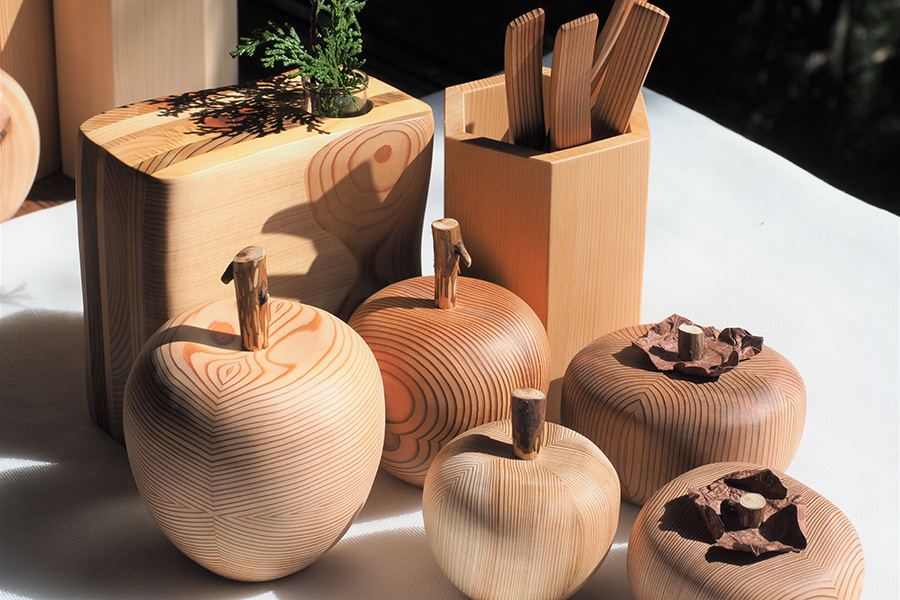The Elegance of Yoshino Cedar

Kawakami’s centuries-long tradition of cedar forestry continues today in items made of Yoshino cedar wood that can be seen throughout the village. Dishes, coasters, serving trays, chopsticks, and even mousepads and business-card holders display the narrow-lined woodgrain that is characteristic of Yoshino cedars. Many of Kawakami’s resident artists use cedar wood to produce pieces that showcase its fine, graceful lines.
Japanese cedar has been a favored building material for centuries due to the trees’ rapid growth and tall, straight trunks. Like many softwoods, cedars grow from saplings to harvestable trees in just a few decades. The width of a tree’s growth rings shows how much it has grown each year, and most cedars produce wide bands that are clearly visible when the wood is cut. A small object carved from common cedar wood might show only two or three curving bands across its entire surface. Products made from Yoshino cedar, however, have dozens of thin, straight bands along their grain. Historically, this elegant and distinctive pattern was much sought after, and Yoshino cedar commanded a high price.
The distinctive look of Yoshino cedar is achieved through close planting. Forced to compete for sunlight, the trees grow tall and thin as they try to stretch above their neighbors. The width of their trunks increases slowly, and the growth rings reflect this. Even a fast-growing Yoshino cedar may take 1.5 to 2 years to achieve the width gained by a regular cedar in a single year.
Today, global cedar prices are determined solely by the width of the timber, not the density of the rings. But the aesthetic appeal of Yoshino cedar endures, and local cedar products and artworks are available for purchase at several locations around the village.
